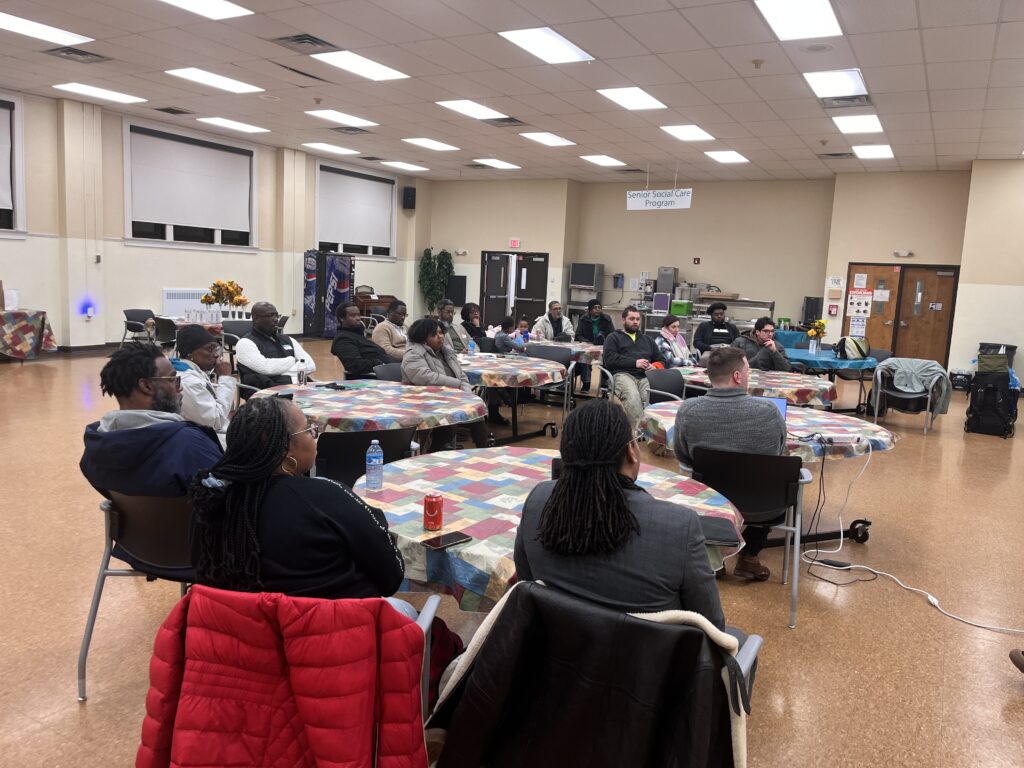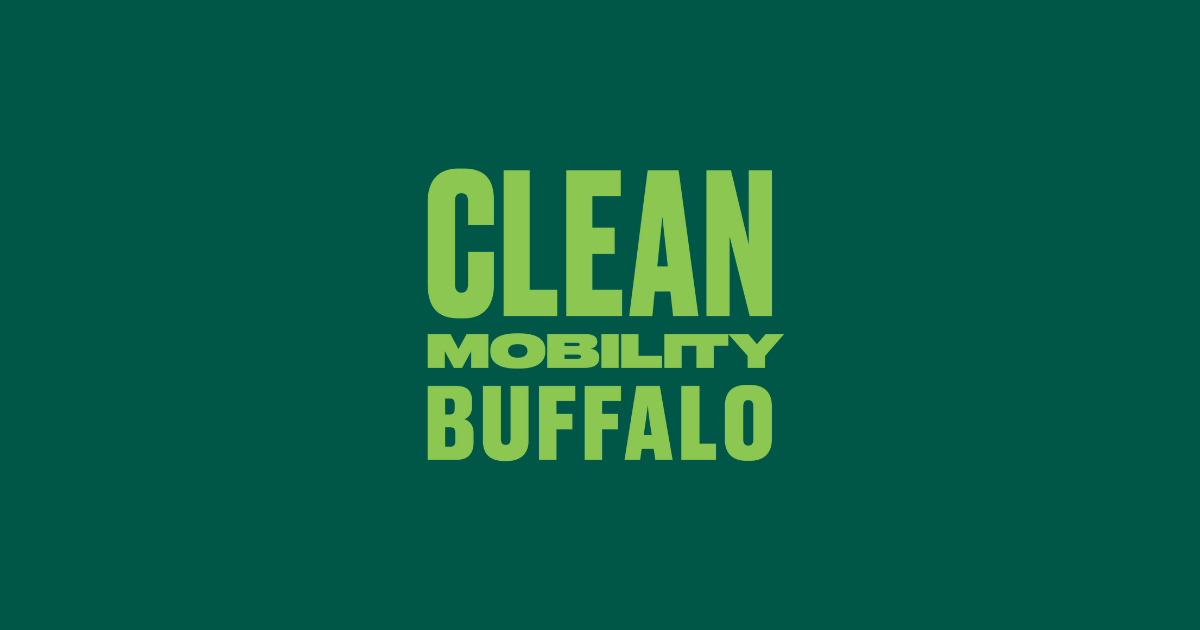
Clean Mobility Buffalo is an alliance of 10 like-missioned organizations and neighborhood leaders, working together to raise awareness of current transportation options and bring forward new environmentally friendly and health-conscious options that prioritize safety, reliability, and accessibility for all who call the East Side home. Clean Mobility Buffalo is funded by the New York State Energy Research and Development Authority (NYSERDA) under the New York Clean Transportation Prizes Program.
One of the deliverables of the East Side Healthy Streets Initiative is to implement quick-build“pop-up” installations that will calm traffic and make it easier to walk, bike, ride public transit, or use a wheelchair.
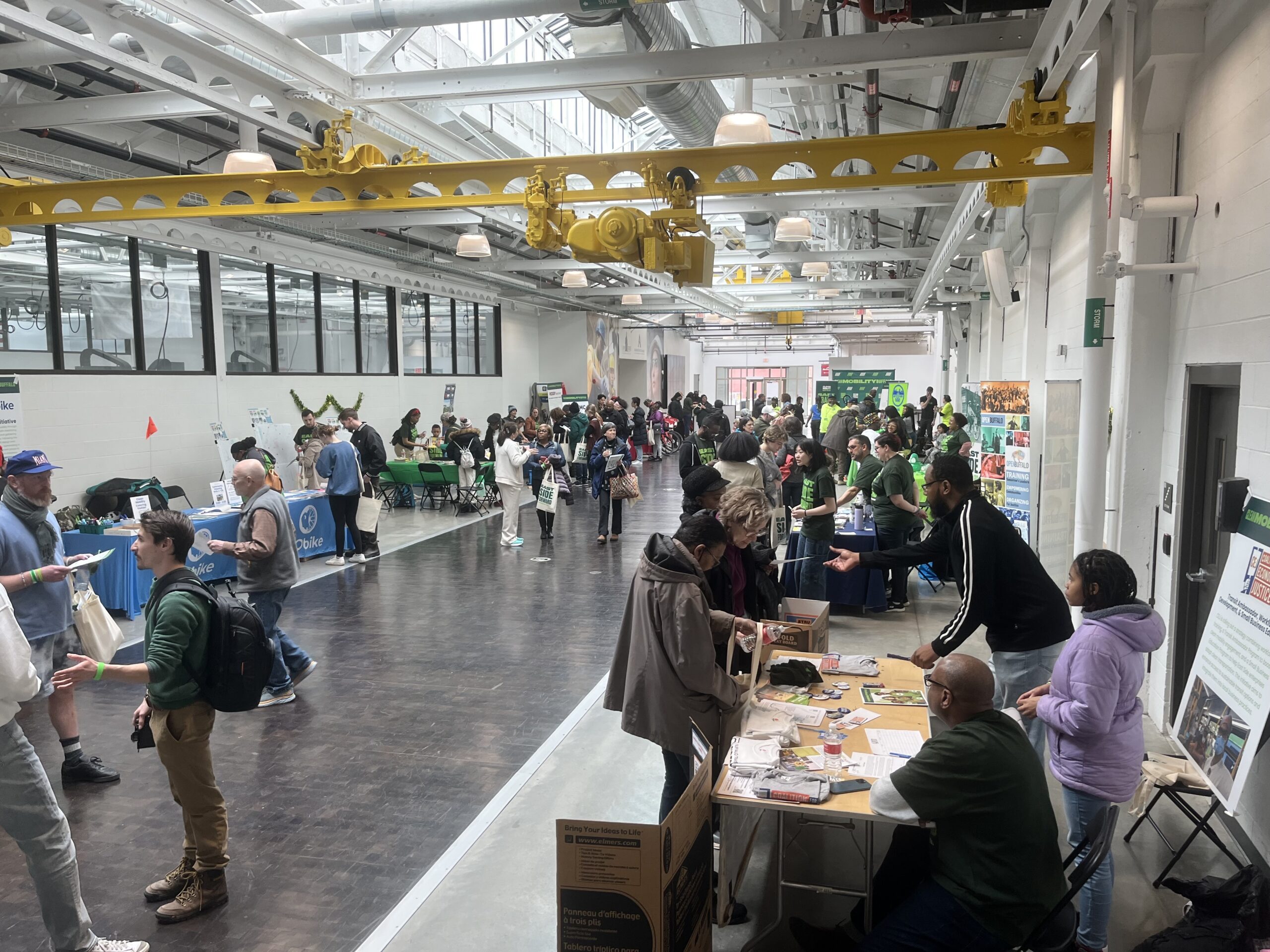


Community Engagement
Want to see and discuss plans in person? Join us at Clean Mobility Buffalo’s Pedal and Play event on Saturday May 31!
Over the last two years, GObike has worked with the Clean Mobility Buffalo coalition and Neighborhood Leadership Group, block clubs, churches, and community centers to ask residents to share their experiences about how they move from A to B in East Side neighborhoods, and the challenges they face in getting around. GObike gathered these insights through a community survey, tabling at community events, hosting youth bike rodeos and bike giveaways, and attending block club meetings. In addition to input from East Side residents, GObike considered other factors like vehicle crashes, vehicle speeds, and connectivity to important community amenities. Informed by that input and data analysis, several focus areas were selected for further engagement with residents and stakeholders. In early 2025, a series of public Complete Streets Workshops were held in four areas to discuss the concept of complete streets and to identify specific areas for improvement and potential street improvements.
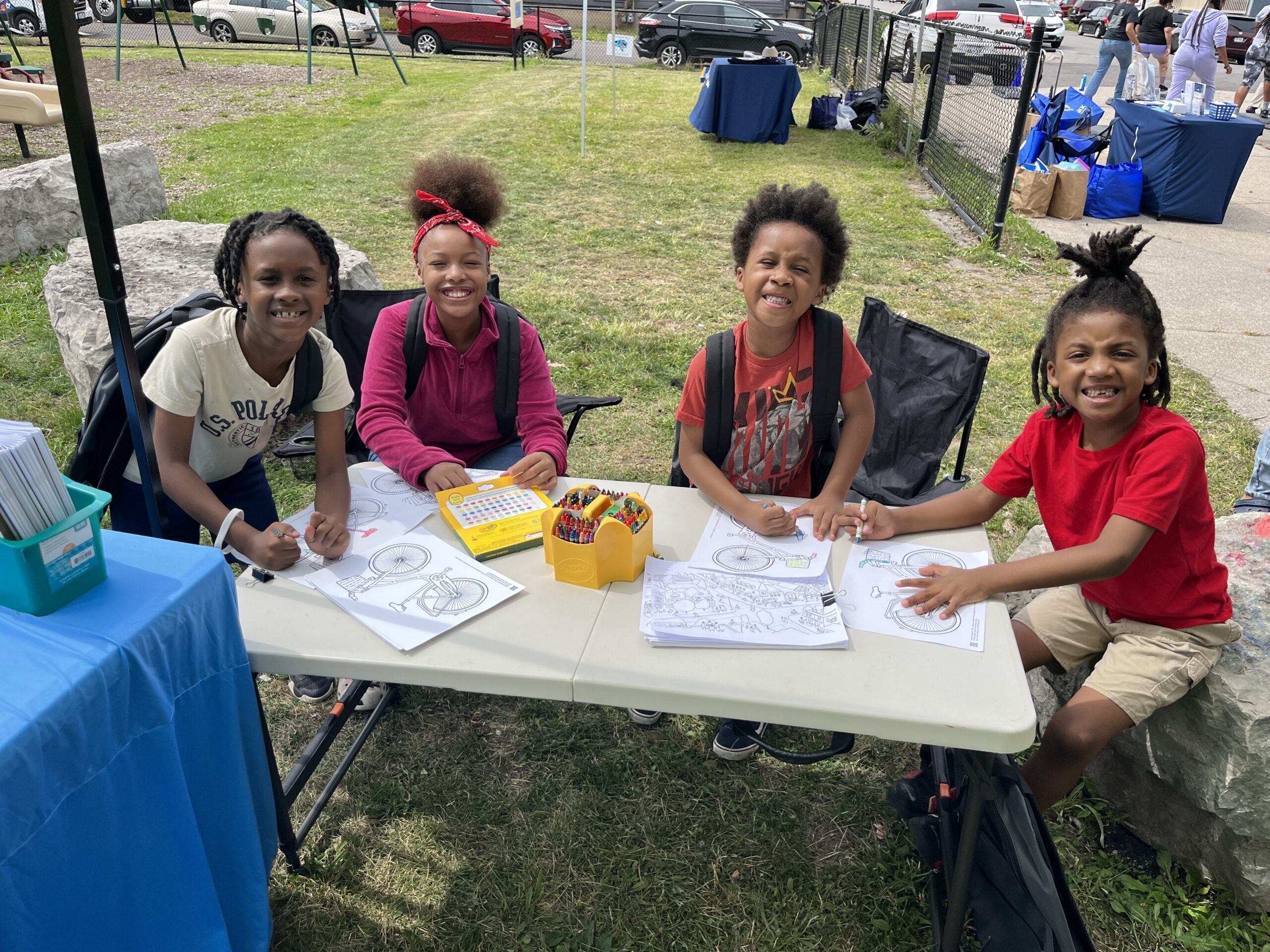
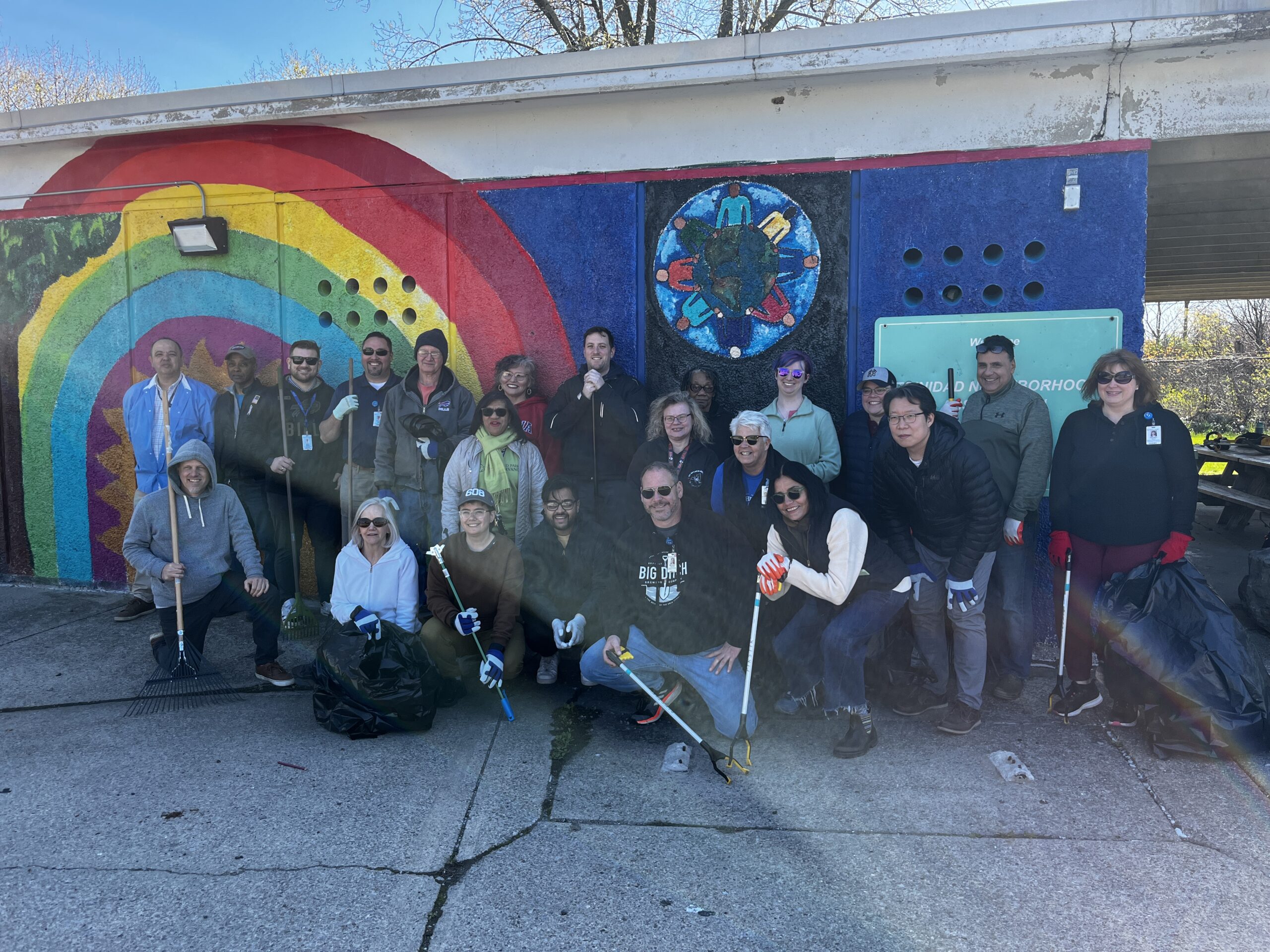
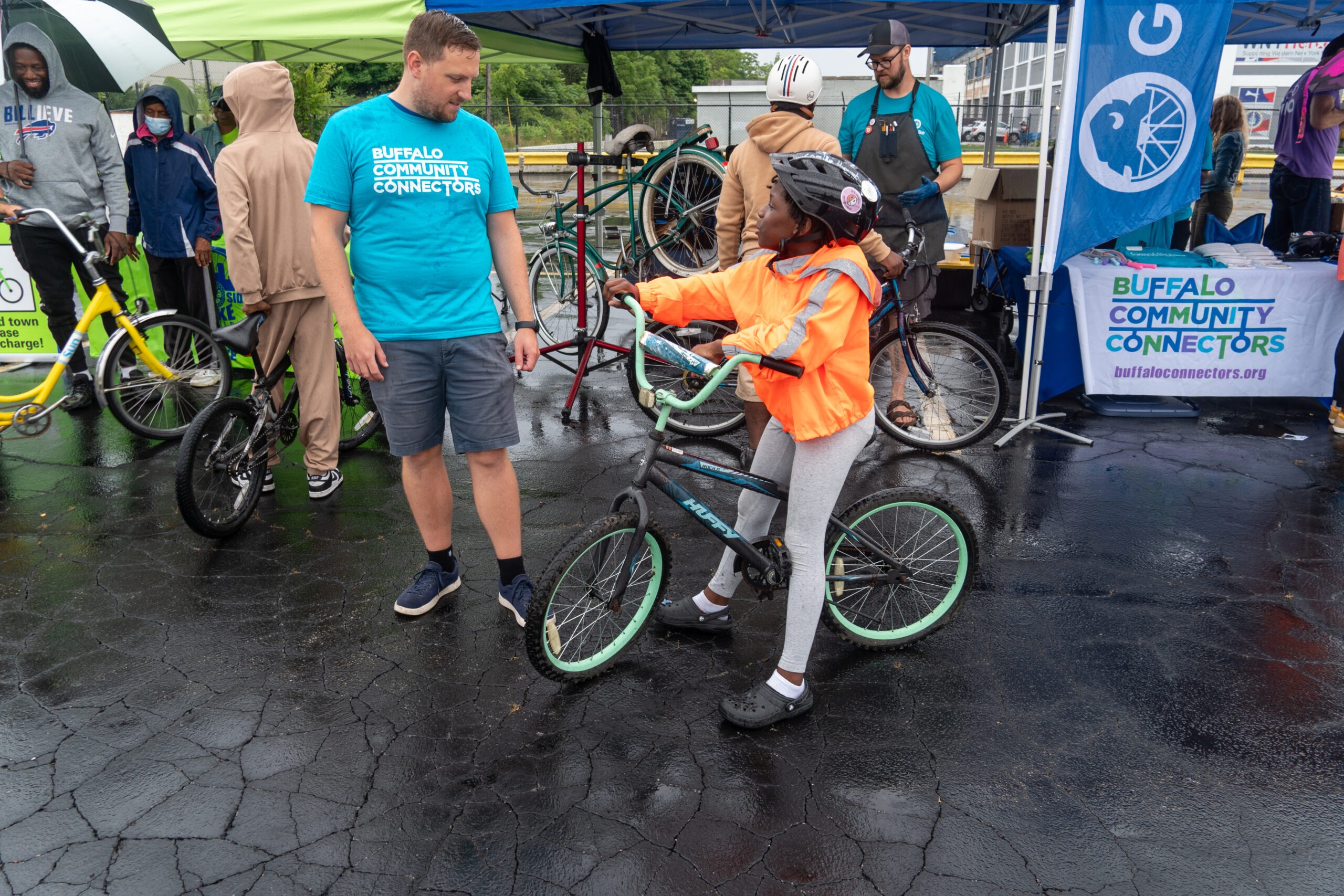
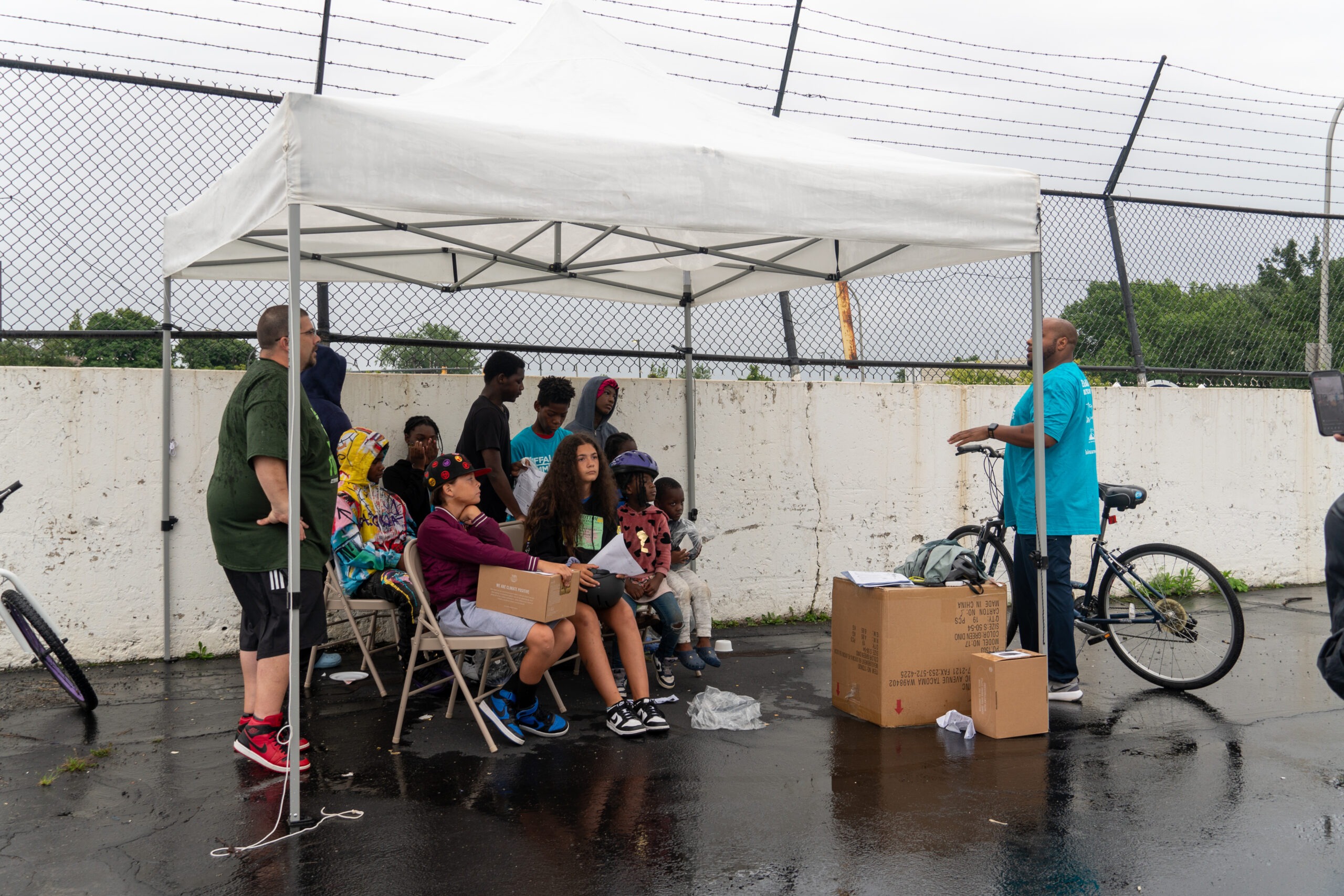
Proposed Improvements: Delavan-Grider
Resident concerns in the Delavan-Grider neighborhood primarily focused on challenges regarding lack of pedestrian infrastructure and vehicles speeding or disobeying traffic laws along E. Delavan Avenue, while some respondents also noted a desire for bike infrastructure along E. Delavan. GObike met with leaders from six block clubs in the neighborhood in multiple workshops to discuss challenges and opportunities related to transportation, and through those conversations also identified the intersection of Grider and Litchfield as a challenge due to a lack of pedestrian crossing onto the ECMC campus.
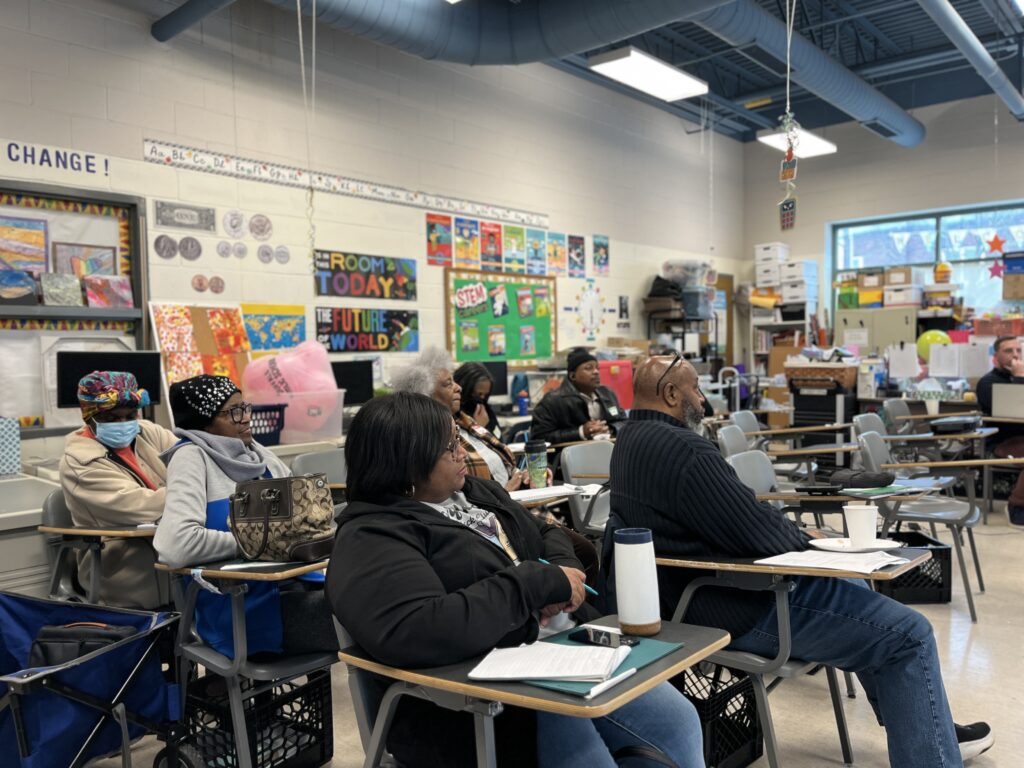
Interventions:
- New Crossing at Grider Street and Litchfield Avenue
- Narrows Grider to two vehicle travel lanes near the intersection, and adds a crosswalk across Grider to improve pedestrian accessibility between ECMC and the surrounding neighborhoods.
- Adds curb extensions to decrease the pedestrian crossing distances.
- Adds placemaking elements, like seating, bike racks, and planters.
- Intersection improvements at Grider and E. Ferry Avenue
- Narrows travel lanes on the E. Ferry approach to the intersection to more clearly define where vehicles should go.
- Adds curb extensions to decrease pedestrian crossing distances.
- Adds seating, bike racks, and planters for placemaking.
- Cycletrack along E. Delavan
- Adds a two-way cycletrack with a buffer to the north side of E. Delavan between Fillmore Avenue and William Gaiter Parkway
- Removable bollards proposes for high-traffic areas, but will not be placed in locations that would interfere with driveways
- Connects bike lanes on Fillmore to multi-use pathway on William Gaiter Parkway
- Preserves existing parking
- Adds a two-way cycletrack with a buffer to the north side of E. Delavan between Fillmore Avenue and William Gaiter Parkway
- Intersection of Grider and E. Delavan
- Adds placemaking elements like bike racks and seating
- Street tree planting throughout the neighborhood
- Residents who are interested in a street tree for their home were given the opportunity to express interest through an online form. Several hundred homes were canvassed.






Take the Delevan-Grider Neighborhood Survey
Sharing your experience in this neighborhood is critical to this project’s success.
Proposed Improvements: Trinidad Neighborhood
Residents of the Trinidad Neighborhood shared concerns about vehicle traffic cutting through the residential streets as a shortcut from the Humboldt Parkway to Kensington Avenue. Residents shared that drivers often make illegal turns onto Loring Avenue from Humboldt, to use Shelbourne Avenue to get to Kensington Avenue. Drivers also tend to ignore stop signs or speed through neighborhood intersections. The block club noted that there’s only one crosswalk across Kensington between the neighborhood and Sister’s Hospital, but that it would be beneficial to have another safe crossing closer to the center of the neighborhood. Lastly, residents recognize that the corner store at Kensington and Humboldt is a neighborhood resource, not just for residents, but for employees and visitors at Sister’s Hospital. However, there are no streetscape amenities nearby like seating and bike parking.
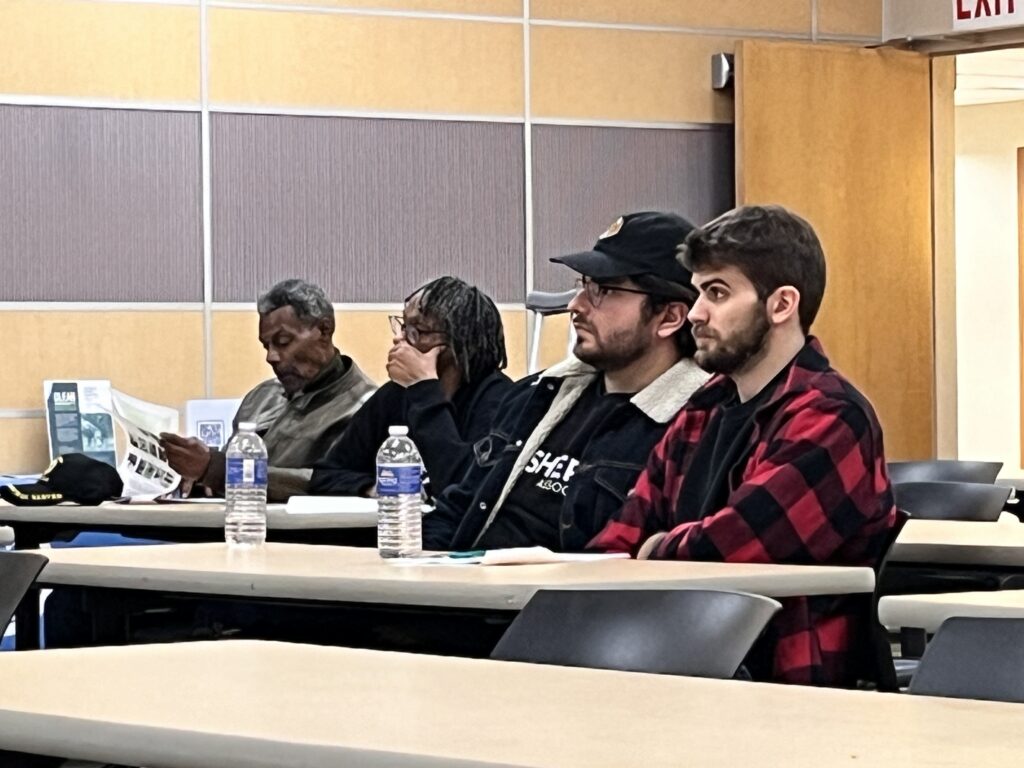
Interventions:
- Curb extensions at Monticello Place and Shelbourne Place
- Adds painted curb extensions with bollards to the four corners of the intersection
- Adds crosswalks at all four crossings
- Placemaking at Kensington and Humboldt intersection
- Adds planters, and bike racks to the sidewalk near the corner



Take the Trinidad Neighborhood Survey
Sharing your experience in this neighborhood is critical to this project’s success.
You've got Questions, We've got answers
Objects like bollards and rubber curbing are designed to be easily removed for the winter season. As a condition of permitting, the City of Buffalo requires that temporarily fixed elements be removed by November 15th to allow for snow removal during the winter months
Although it is definitely true that more people in the City of Buffalo drive than ride bikes for transportation, there are still about 2,500 bike trips each day on the East Side, on average, according to 2022 data from Streetlight Insights. Bike lanes provide clear, separated space for bicyclists to encourage people on bikes to ride legally and safely according to the rules of the road. They also keep bikes and cars separate, so there is less conflict between drivers and bicyclists, moving both more efficiently. In places with wide vehicle travel lanes and no lane markings, bike lanes can also help define where drivers are supposed to drive, reducing confusion and dangerous speeding.
Quick-build projects like these are meant to help demonstrate new concepts while making low-cost, immediate safety improvements to neighborhoods and roadways. Ultimately, the insights learned from implementing these projects can lead to better decision making around street infrastructure investments in the future. Elements like paint can stay in place until the road is restriped or resurfaced, while elements like street furniture can stay in place indefinitely. However, none of these projects makes “permanent” changes to the street in the sense that they do not involve removing existing infrastructure and adding new “hard” infrastructure like concrete or asphalt. A benefit of the quick-build nature of these projects is that they can be adjusted on-the-fly after they’re installed if an element of the design isn’t working as intended.
We recognize that some folks may not like elements of these projects. GObike has aimed to ensure these projects are a reflection of the needs and desires of community residents. After the projects are installed, we will conduct another community survey to learn insights about what residents like or dislike about the projects. Immediate concerns about the project can be submitted directly to GObike using the contact us form. Please remember that changes to the roadway are temporary.
Let us know! Similarly to those who dislike the project, we’d encourage you to share your thoughts and experiences in the survey that will be shared after the project is installed. If you feel really strongly about the project in a positive way, feel free to reach out to us directly using our contact us form.
Typically, traffic calming projects slow vehicle speeds, on average, meaning they make it more difficult for drivers to far exceed the posted speed limit. However, more consistent vehicle speeds that align with the posted speed limit and more clearly marked out travel lanes can have the effect of actually making traffic flow more smoothly. Plus, safer streets means fewer crashes, meaning less delays and backups.
Yes, all designs have been drawn and laid out by GObike’s own licensed engineer with over 35 years of experience. All projects have been reviewed and permitted by the City of Buffalo Department of Public Works. Designs are based on guidelines in the US Department of Transportation’s Manual of Uniform Traffic Control Devices and the National Association of City Transportation Officials Urban Street Design Guide.
Any time a street is reconfigured, traffic typically takes a few weeks to adjust to new traffic patterns. When the projects are initially installed, you may notice more traffic for the first few days, then a gradual adjustment back to normal over the next few weeks.
Project Timeline
Early Spring 2025 – Permitting with the City of Buffalo
Spring-Early Summer 2025 – Pre-Implementation Data Collection and Installation
Summer 2025 – Open-Streets Event (location and date TBD) to Celebrate the Projects
Late Summer 2025 – Post-Implementation Data Collection
Learn more about the physical elements of complete streets:
Bike Lane/Cycle Track: A portion of the roadway that has been designated by striping, signage, and pavement markings for the preferential or exclusive use of bicyclists. Bike lanes enable bicyclists to ride at their preferred speed without interference from prevailing traffic conditions and facilitate predictable behavior and movements between bicyclists and motorists. (More information)
A cycle track places all bike activity on one side of the roadway and provides two-way travel for bikes that are physically separated from vehicles. (More Information)
Sidewalk Extension: Provides additional pedestrian space at street corners by extending sidewalk space into the roadway, thus narrowing driving lanes and creating a shorter distance for pedestrians to cross the roadway safely. (More Information)
Crosswalk & Pedestrian Island: Using white paint to demonstrate the path pedestrians should take when crossing the road, crosswalks should be designed to offer as much comfort and protection to pedestrians as possible, while helping to facilitate eye contact by moving pedestrians directly into the driver’s field of vision. (More information)
To supplement crosswalks, a space can be installed partway through the crosswalk using rubber curb barriers and bollards to create additional protection for pedestrians as they cross, called pedestrian islands.

